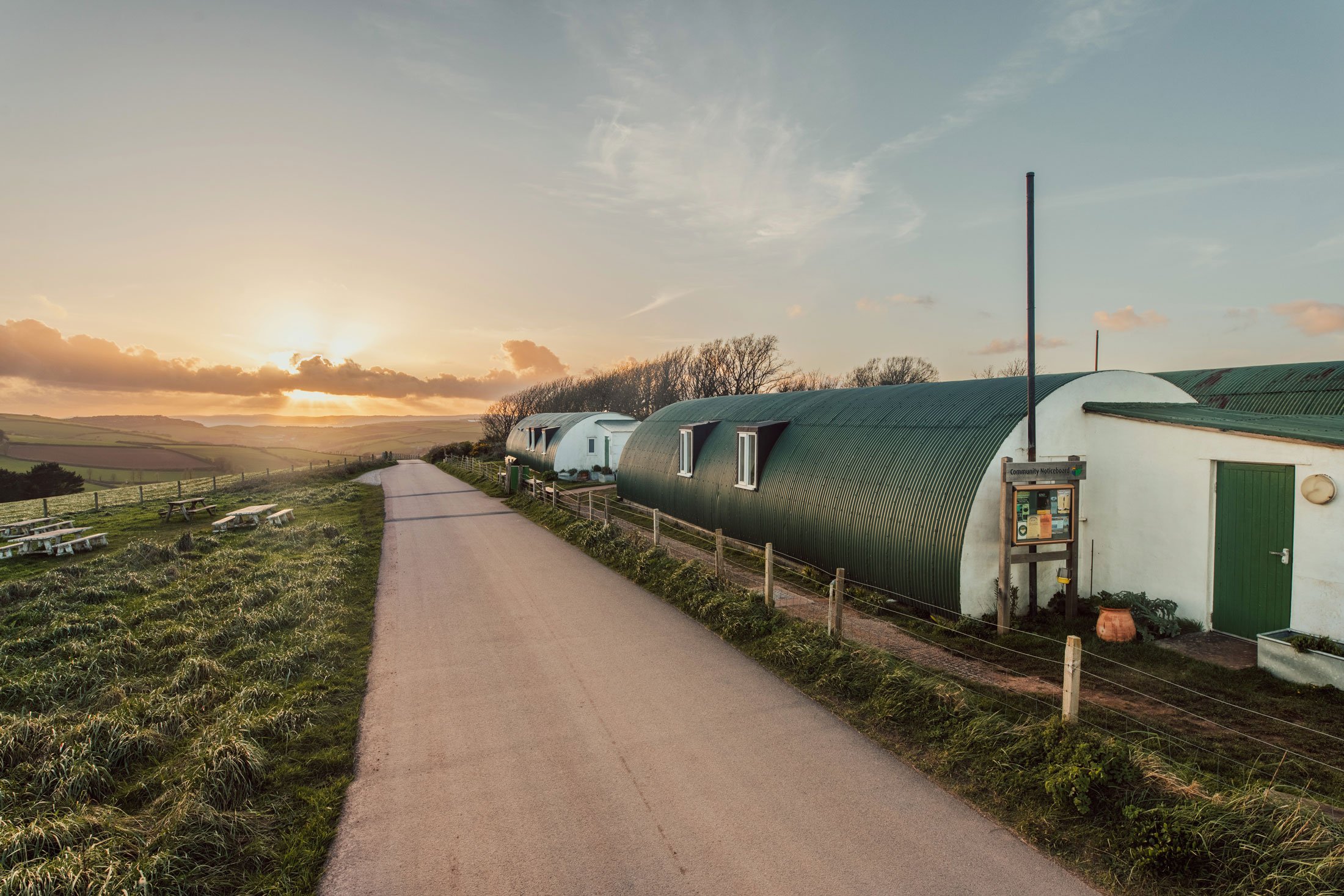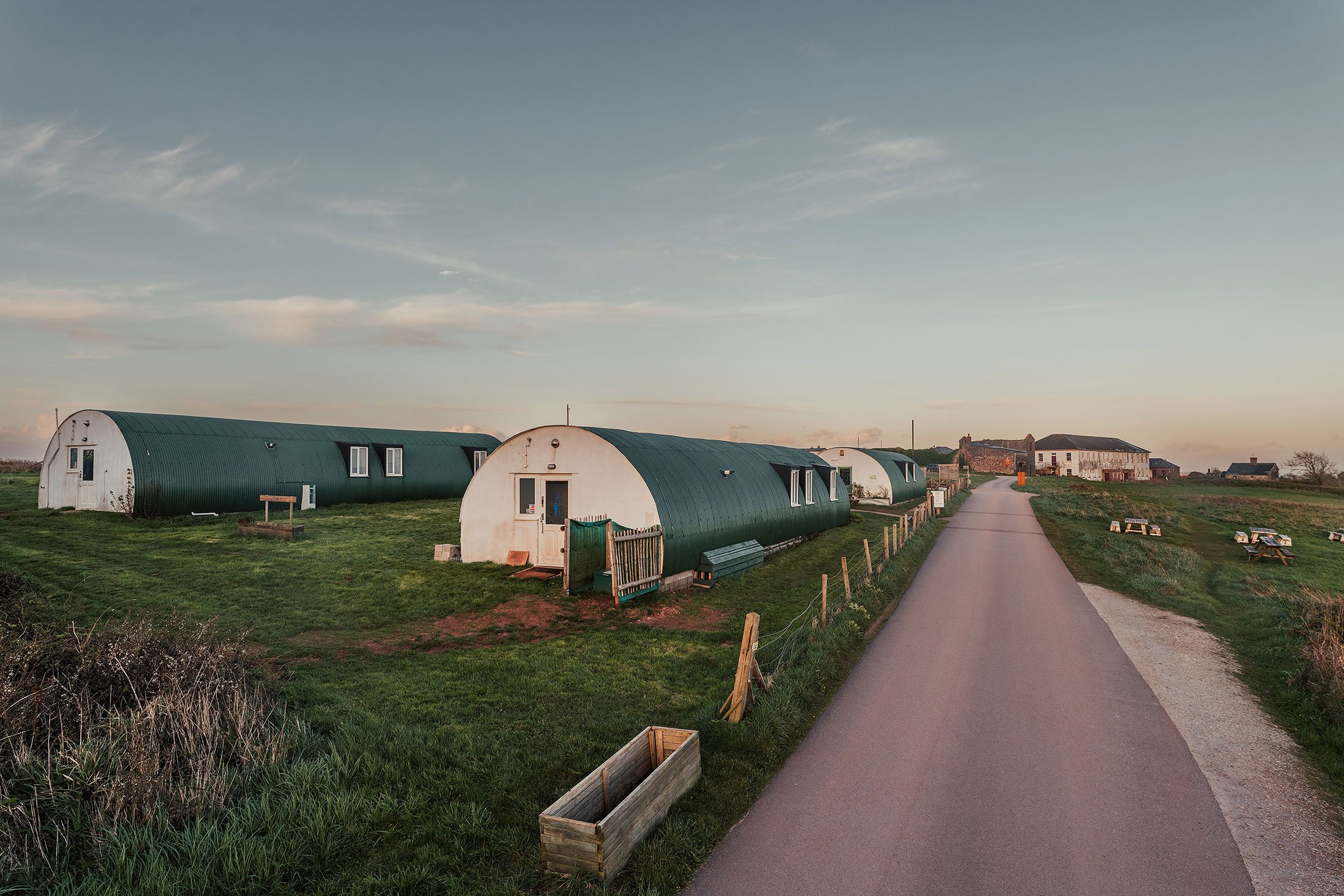
Nissen Huts
Nissen Huts
The Nissen Huts stood out as an important part of many people’s stories, from both the children who stayed at the post WW2 summer camps, to those who worked at and visited the Nissen Huts in the various educational projects from the early 2000s onwards, including Cornwall Outdoors, projects that brought many European Volunteers to Maker (Pathway Europe, Point Europa), The Junction and The Canteen.
Image © Dennis Clarke
The Maker Memories digital exhibition has various photographs from the educational projects, including those from The Tamar Outdoor Centre (2003-4), Maker Junction and of early days at the summer camp, some taken on an old Brownie camera.
The importance of the Nissen Huts was also expressed in interviews, with many saying that girl pupils would sleep in the Nissen Huts whilst boys stayed in the Barrack Block.
Lillian, who stayed at Maker Camp in the mid-1950s, recalled that:
I came to Maker Camp in the mid ‘Fifties with Penlee School, I think it’s called Stoke Damerel now. We stayed in one nissen hut. It was like going to America, our big holiday. Something to look forward to. Full of excitement.
What was special? Having to fend for yourself; midnight feasts – you could be little devils. There were separate beds all down the Nissan Huts. Late nights, full of giggles and chatting. The beds were comfy. But what sticks in my mind is the music. So now when you hear Buddy Holly and records of that era it always reminds me of us at Maker Camp. We danced and glammed ourselves up. If I hear it now I have to listen because of my memories of Maker.
Boys and girls did have some mixed social activities that took place in the Nissen Huts. Ted, who stayed at Maker in the late 1940s reminisced that:
The best experience was the camaraderie of the children and the teachers. You are away from the gloom of the noise, the bomb sites, the destruction, you are in open space and free to do almost anything.
We had a farewell party in the Nissen huts with a wind up gramophone and a picture show and a mobile movie man. Going to Maker camp was a highlight of my life”.
The Nissen Huts were also place to eat together, recalled Mark:
I went to Maker Camp in the last years of my junior school, with Ford Primary School in the 1970s. I tell you one of the things I remember particularly was mealtimes and I’ve seen it before and it seemed very space age…we had these large oval-shaped plastic trays and in that tray you had a space for your knife and fork, a space for your fork, and a space for your main course on one side and your pudding on another, so it all came in one, then you marched back to a kind of hut and that’s where you ate it. And I was quite excited to get it all together, I’d never seen anything like that, and what I loved about it was you could eat some of your pudding, some of the main course, we could eat what we wanted and I loved that.
Alongside the military heritage of the Nissen Huts, we can see how they have been repurposed and valued for creativity, education, food and fun.
Contemporary images © Dom Moore. All other images courtesy Maker Memories, with thanks to all those that have contributed their personal collections.




